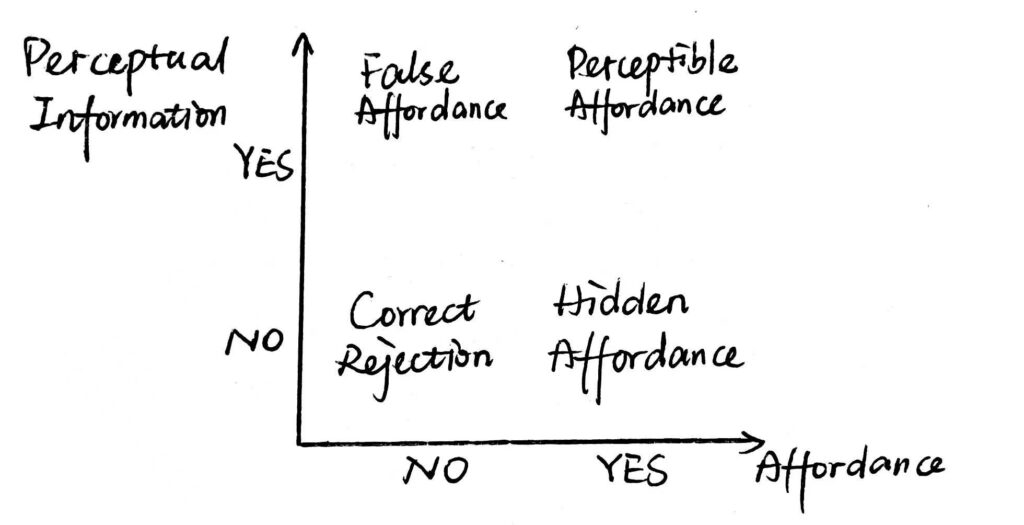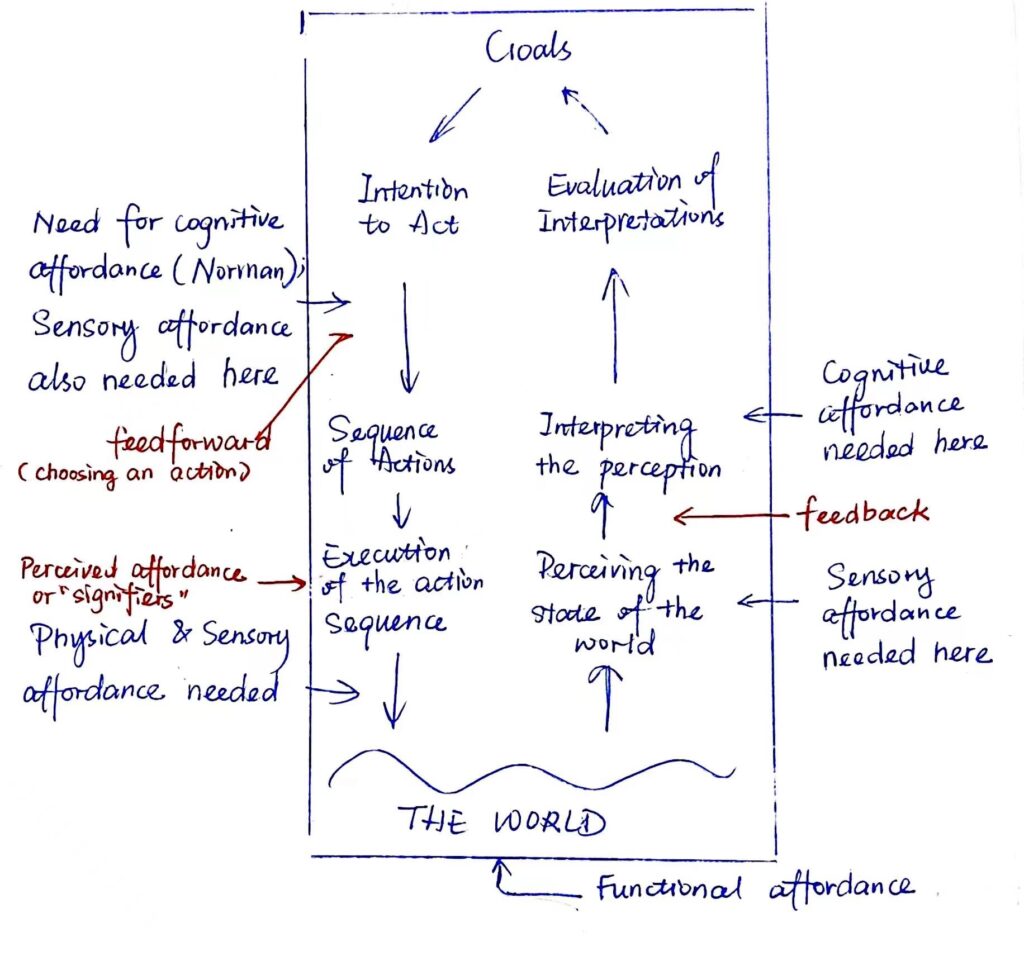Click here to view the brief
Affordances is the action possibilities provided by the environment to the actor when it is a technical term. It can be explained in normal words that it is what a person can do with the object.
It is what the object can be used directly, and what it is designed for. It has perceived or actual property. Sometimes people need to learn to use the affordances as it must be discovered through perceptual learning, which means it “may require much exploration, patience, and time”(Gibson and Pick, 2003, p. 17), like a baby needs to learn how to react with a chair. Moreover, it is a relational property, which means it differs when the actors are different. There are sequential affordances and nested affordances, for example, people pull the door handle first and then knows it swings. And the information about affordances can be sound, the sense of touch or their combination besides visual information.

Perceived Affordances

Perceived affordances helps the users to do their cognitive actions. It tells users something about what action they need to perform to achieve their goals. Perceived affordances tell the available physical action and the way to active it.
| Feature of the device | Basic applications |
|---|---|
| Cover the instant noodle bowl | Take photos |
| Flatten paper wrinkles | Check the calendar and to do list |
| Scratch | Watch a video |
| Hide | Organize documents |
| Listen to music | |
| Read | |
| Record audio | |
| Measure distances | |
| Browse more applications | |
| … | … |
